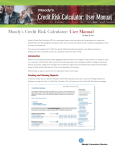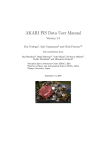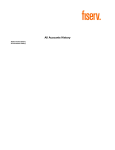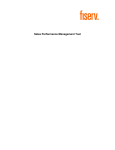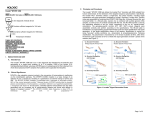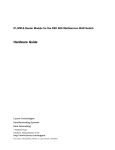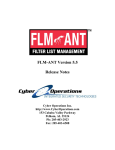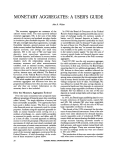Download Automation and Virtualization
Transcript
13th Annual International Software Testing Conference Paper on The Challenges of Software Testing: Automation and Virtualization Authors Primary: Email: Phone: Fax: Rajni Singh [email protected] +91.120.409.3073 – Work +91.997.179.8831 – Cell +91.120.409.5001 Secondary: Surender Singh [email protected] +91.120.409.3068 – Work +91.954.017.5120 – Cell Fiserv India Pvt. Ltd. 6, 7, 8 Floor, Tower C & D, A - 44/45, DLF IT Park, Sector - 62, Noida, U.P.-201301 Phone No.: +91-120-6185000 http://www.fiserv.com/ Fax No.: +91-120-6185001 The Challenges in Software Testing: Automation and Virtualization 2 Table of Contents Abstract ................................................................................................................. 3 Objective ................................................................................................................ 3 Challenges in Automation Testing .......................................................................... 3 Challenge 1: Customer Expectation ..................................................................... 3 Challenge 2: Automation Strategy ....................................................................... 4 Challenge 3: Tool Selection ................................................................................. 4 Challenge 4: Resource Selection ......................................................................... 5 Challenge 5: Test Estimation ............................................................................... 5 Challenge 6: Technical Issues ............................................................................. 6 Challenge 7: Low Return on Investment ............................................................. 6 Virtualization ......................................................................................................... 7 Virtual Machine Optimization ................................................................................. 8 Implementation of challenges and solution in Existing Project .............................. 9 Test Automation Framework Overview: Basic Approach to Automation ............... 10 Salient Features & Benefits .................................................................................. 11 Conclusion: .......................................................................................................... 12 Acknowledgements .............................................................................................. 12 Reference Materials ............................................................................................. 12 About Fiserv ......................................................................................................... 12 Author’s Biography .............................................................................................. 13 Company Confidential Copyright © 2011 Fiserv Inc.; All rights reserved All brand names and trademarks belong to their respective owners The Challenges in Software Testing: Automation and Virtualization 3 Abstract The perpetual demand to cater to reduce the cost, invariably leads Quality Assurance (QA) team to test automation. Most organizations have adopted test automation only in large programs. Typically, in an organization, large programs with sizeable budget invest in automation since they are able to demonstrate ROI and other benefits in more compelling fashion. These programs tend to focus on quick deployment and not on reuse or long term development of automation processes. Over the period of time QA team struggle to sustain the same benefits that automation previously provided. Software Testing is critical to ensure that the existing functionality of software application is not impaired by modification and upgrades, as independent testing is still evolving and the software, application upgrade is dynamic and challenging. Also, creative approach is required to automate the software successfully and to gain the long term benefits. The key area of concern is large project for automation and cross platform with frequent software upgrades, which require quick turnaround time. The focused approach to automation defined here will enables testing organization to cope with the challenges faced in each test automation life cycle. Objective Organizations are generally of the view that test automation should be used for large projects only, as it reduces timelines and improves quality. It is true that automation reduces timeline and improves quality, but to make good use of automation, it is required to follow some processes and strategies. Some of the roadblocks and strategies involved in automations are discussed in this document. Roadblocks deter some organization from investing in test automation. Also, it is a known fact that test automation requires considerable budgets and efforts. This paper provides an insight of best practices to be followed and strategies to be adopted in order to get good returns from test automation. This paper also provides an end-to-end test automation framework that helps overcome the key challenges. It also covers the issues faced in automation testing on virtual machines and benefits of virtualization with key solutions to the roadblocks. Challenges in Automation Testing Few challenges in automation testing are mentioned below with the proposed solution. Challenge 1: Customer Expectation Customer’s misconceptions Automation can be completed in less amount of time with the tool’s intelligence Tools can generate test data for automation Scripts runs irrespective of platform, environment, and hardware 100% unattended script execution Company Confidential Copyright © 2011 Fiserv Inc.; All rights reserved All brand names and trademarks belong to their respective owners The Challenges in Software Testing: Automation and Virtualization 4 Scripts capture all defects Customer are not aware of Principles and Behavior of testing tool Technology used in tools Solution – Customer Expectation Educate customer about True benefits of automated testing, such as Reliable, Repeatable, Saves time, Programmable, etc. Testing tools, and their pros and cons Test automation framework and ROI Test script maintenance effort Challenge 2: Automation Strategy Ad hoc test automation strategy One Test Case – One Script Automation approach Disadvantage High maintenance cost of large script suits Result Analysis and reporting takes huge time for a releases Lack of process in identifying tests to be automated No guidelines for test case identification Inefficient process in place Solution - Automation Strategy Defined Test Automation Process implementation Requirement Driven approach for test automation Challenge 3: Tool Selection Compatibility with AUT Cost and performance Lack of tool support from vendor Tools not recognized Third Party objects/controls in the application Company Confidential Copyright © 2011 Fiserv Inc.; All rights reserved All brand names and trademarks belong to their respective owners The Challenges in Software Testing: Automation and Virtualization Solution: Tool Selection Tool Selection Team should be formed before selecting a tool Automation team should ensures Analysis of backward compatibility of various versions. Tool’s incapability and defects. Continuous evaluation of Tool upgrades Compatibility with configuration management tools 24 X 7 Customer Support from Vendor Challenge 4: Resource Selection Lack of skilled resources Use of Sub contractors in team Fresh resources are inducted Rigorous training is executed to cope up with project deadline Slow learning curve in business as well as tools More script defects leads failure to uncover application defects Customer lost confidence on Test Automation Solution: Resource Selection Efficient Knowledge Transition process should be in place Backup plan for each resource Manual testing team should also be involved in the automation aspects Form tool excellence committee in team for R&D – a food for knowledge update Minimize resource attrition and retain resources by motivations, awards and etc. Weekly Technical Issue meeting to be conducted Challenge 5: Test Estimation Estimation based on the test steps in the Manual test cases. Complexity was derived based on the number of steps in the manual test cases. Control Factors were calculated based on experiences, not by statistically proved data. Test Data creation effort was not accounted in the estimation. Solution: Test Estimation Follow “Test Point Analysis” estimation technique. Key points to be considered for estimation Size of the Application Test Strategy Company Confidential Copyright © 2011 Fiserv Inc.; All rights reserved All brand names and trademarks belong to their respective owners 5 The Challenges in Software Testing: Automation and Virtualization Productivity Derive Test Points from Functional Points. More factors that also to be considered Environment Factor Quality Factor Represent effort break up in terms of percentage Challenge 6: Technical Issues Tools not recognized Third Party objects/controls in the application On the fly GUI object / object property change Objects names are not meaningful and unique Color Code validation is not successful Graphical outputs and Image validations are not successful Multi browser and multi platform validations are not successful Critical functionality in the application were not effectively automated Additional manual steps required to carry out the automation Solution: Technical Issue Identify non-recognizable objects in early phases of automation Work collaboratively with Design and Development team Define Scope in, Scope Out in Test Automation Plan Create utility scripts to support the main automation scripts through R& D Challenge 7: Low Return on Investment Schedule and Effort over run due to higher degree of script maintenance. Negative impact on SLA compliance for script execution. Higher degree of challenges in unattended execution Frequent functional change Application Performance Instability Solution: Increase in Return on Investment Implement Process for Test Automation Provide detailed efforts to develop automation script. Implement Automation Frame Work Plan and organized scripts execution for each build Risk Based Execution Maximize unattended execution Company Confidential Copyright © 2011 Fiserv Inc.; All rights reserved All brand names and trademarks belong to their respective owners 6 The Challenges in Software Testing: Automation and Virtualization Virtualization Virtualization refers to an act of creating a virtual version of something, including but not limited to a virtual hardware platform, operating system (OS), storage device, or network resources. It refers to creation of a virtual machine just like the real one but not the original operating system. In order to achieve virtualization, some key factors should be kept in mind, which are as follows: 1. 2. 3. 4. Ensure high availability of environment Maximize Resources Improve Performance Security However, while achieving virtualization, various challenges are faced. Some of the most common challenges faced while achieving virtualization are as follows: 1. VM Slowness: While working on the virtual machines few things which we experience is slowness of the applications, tools or basic day to day software’s which we use Solution: Adjust the visual effects settings/performance settings of the machine to “Adjust it for best performance” Changed the virtual memory setting to set it on the basis of “System managed size” Avoid using any wallpaper/screen saver on both Local and VM workstation Changed the display properties of both local and VM workstations by either selecting the “color size” to be minimum i.e 16 bit Run and schedule Disk Defragmenter on the Virtual machines Run and schedule disk cleanups 2. Dependency on third party tools like VMWare or Junos(for VPN) to connect to the virtual machine 3. Third party tools have sometimes impact/dependency/conflict on tools which we currently use ex VMWare view client software is a java based software so installing “Java Add In” in QTP causes conflicts 4. Virtual machine causes additional space/infrastructure requirements. Solutions to optimize the virtual machine are caching, defragmentation etc. 5. Network Limits Implementation – When connected with the VPN(Junos Pulse) the rest the network goes down i.e it is not integrated with rest of the network 6. Transfer of data from the virtual machine to the local workstation is not possible Company Confidential Copyright © 2011 Fiserv Inc.; All rights reserved All brand names and trademarks belong to their respective owners 7 The Challenges in Software Testing: Automation and Virtualization Virtual Machine Optimization 1. Use Webmail to Access Outlook on Virtual Workstation on a limited basis 2. Only Start Web Applications on the Virtual Machine from icons established on the desktop i. ii. Avoid running Web Applications like Facets and, Knowledge Central from Team Central. Establish application icons on the Virtual Machine desktop and always access the application using the desktop icons. 3. Visual Effects and Advanced Virtual Machine Performance i. ii. iii. iv. v. vi. vii. viii. ix. Verify the Visual Effects and Advanced Virtual Machine Performance options are set correctly Go to Start > My Computer select >Properties. Click the Advanced tab select > Performance Settings button. On the Visual Effects tab, select > Adjust for Best Performance On the Advanced tab select Programs under the Process Scheduling box On the Advanced tab select Programs under the Memory usage box Click the Change button in the Virtual memory box Select System managed size Click OK>OK>OK and close Window 4. Avoid bringing up any Application on the Local Workstation when on a call 5. Avoid using a background and screen saver on VM and local workstation desktop 6. Verify display quality is set to 16-bit on the virtual machine and local workstation desktop 7. Other local workstation and virtual machine considerations Company Confidential Copyright © 2011 Fiserv Inc.; All rights reserved All brand names and trademarks belong to their respective owners 8 The Challenges in Software Testing: Automation and Virtualization i. ii. iii. iv. 9 Machine – Both - If using Vista or Windows 7 disable side bar options Machine – Local Workstation – Verify Windows auto updates are set to non-hours Machine – Local Workstation – Verify Update cycle of security software is set to nonbusiness hours Machine - Both - Do not run streaming internet media from either the local workstation or the virtual machine (this includes internet radio, television, excessive news feeds) 8. Verify all local workstation NIC drivers are current 9. Disconnect Virtual Machine. Make sure to disconnect your Virtual Workstation by the end of the work day. Go to Start > Disconnect. 10. Run and Schedule Disk Defragmenter on Virtual Machine. Run the Disk Defragmenter to reorganize your disk space. Then schedule the Disk Defragmenter to run on a monthly basis. 11. Run and Schedule Disk Cleanup on Virtual Machine Implementation of challenges and solution in Existing Project Our Project is for Tesco bank for Signature Europe, requirement of Project that we need to automate around 460 business scenarios in 3 months of time with complete regression pack execution. The main objective for the Regression pack is that it should work for different environment and result can be verified and compared with each next release. Reports should save in secured manner so that no one can do any changes. Scenario Verification points and triggers points screen shot should be captured and verified by Business Analyst at their end. Now the challenge we faced in initial phase are 1. Team Skill: Both domain and technical skill was not expected for the required project. Our Team comprise of 4 team members with maximum of 3-4 months of experience in banking domain as well in IT industry and one team lead with Automation expert to run this project 2. Existing Framework challenges: Existing Framework does not include successful verification screen shot and also reports are not protected 3. Environment challenges: Configuration settings changes and set up issues. a. Setup challenges include test data setup for scenario for each environment. 4. Unattended Execution Automation script should execute unattended. 5. Automating IBM mainframe AS 400 as IBM AS 400 is very protected mainframe type so most of the object properties are protected, which cause object identification issues. To resolve the banking domain knowledge and vb script coding skill proper 2 week training were planned with the Business Analyst and Quick Test professional Tool training were given. Framework enhanced first to meet the business partner reporting and scenario description requirement. Took 20 hours to make changes in framework. Converting HTML reports to PDF and protected from any further changes. Company Confidential Copyright © 2011 Fiserv Inc.; All rights reserved All brand names and trademarks belong to their respective owners The Challenges in Software Testing: Automation and Virtualization 10 Reusable functionality identified and functions are created and shared object repository created. Team then started preparing the scenario automation script. Automation script verification point’s screens are then verified by Business analyst and if some changes in functionality or workflow required is implemented. To avoid script changes scenario manual workflow is verified first. For Environment configuration setting and setup changes challenges in first cycle we prepared the issue log related to configurations and setup with proposed solution is maintained, which further set in other environment comes. For this shakedown activity we take 4 hours to setup to avoid execution roadblock for new environment. Also, for the scenario which are require any data setup we upfront created pre-requisite test data script for new environment execution. As best practices we maintain Issue Log, update traceability matrix, Automation Run book, Failure analysis is easier with pdf report document, daily status update with business partner and defect are maintained in Quality center. Unattended Execution was the biggest challenge Banking application and office premises security issue for system unlock Unlock code written so that closed screen can take screen shot and system does not go to sleep. Pcomb process is required to successfully verify most of the scenarios Automated scripts were dived before and after pcomb run steps and well maintained in batch in cycle driver. Recovery scenario reduces the performance of scripts as well processes are slow. Functions created and called where ever recovery is required. System Performance for large batches execution To avoid the low system performance due to cookies and temp files created while execution simple clear file and cache delete code written and after batch of 10 or any intermittent error this code execute and resume to execution. Also, on AS 400 reusable login and purge code written to have secure login each time it fails to connect. Test Automation Framework Overview: Basic Approach to Automation A hybrid framework which incorporates the best practices of Test Library, Test Modularity, Data Driven and Descriptive Programming approaches is developed which will be used with QTP to automate the test scenarios defined in the regression test pack. This framework mainly focuses on re-usability of automation code and automated test scripts which reduces the maintenance effort. This translates to a significant savings over the course of time. The framework architecture diagram is shown below. Company Confidential Copyright © 2011 Fiserv Inc.; All rights reserved All brand names and trademarks belong to their respective owners The Challenges in Software Testing: Automation and Virtualization 11 The driver script written in VB Script invokes the execution. It launches QTP which loads the test scripts marked for execution in Cycle Driver Excel sheet. These test scripts load the corresponding object repository (shared and/or local), test data (global variables and/or data sheets) and calls the re-usable functions (automation code in VB Script) from the function library. It then performs the appropriate operations on the Application Under Test (AUT) as per the business flow. At the end of test execution, the framework generates a user-friendly test report in Excel, HTML, pdf format which contains total execution time, total test scenarios executed, number of test scenarios passed / failed, environment details, machine name on which test execution was done, executed by, operating system, verification point screen shot etc. Salient Features & Benefits In addition to standard features such as performing operations and verifications on the test objects, this hybrid framework offers other sophisticated features, like 1. Independent test Architecture 2. Wise use of Descriptive programming and Vbscript coding used 3. Flexibility to create application-specific modular functions; operations or task that cannot be performed by library functions for example – composite test objects 4. Ability to test variety of applications like web, windows-based, and AS/400 (IBM Mainframe) 5. Multi-language support 6. Optimum utilization of the test automation tool 7. Simple Test Design; a non-technical or a novice user / tester can effectively create test scripts with minimal training or mentoring effort 8. Configurable framework settings 9. Create reusable automated test scripts 10. Parameterization of test scripts; iterate for same or different data 11. Maintenance & Expandability is easier and quicker 12. No database required 13. Smart exception handling 14. Unattended execution attained Company Confidential Copyright © 2011 Fiserv Inc.; All rights reserved All brand names and trademarks belong to their respective owners The Challenges in Software Testing: Automation and Virtualization 12 15. Screen shots for verification point and trigger points 16. User-friendly test reports in Excel format, HTML and PDF format. Conclusion: A Reusable Automation Framework approach fits all domain automation. Not only automation also the challenges in virtualization can be overcome by adopting a comprehensive strategy which focuses on initially identifies the challenges and applies the proposed solution. Deployment of Reusable Automation framework in different business units within Fiserv Global Services provided significant benefits in terms of savings in test designing and maintenance, test execution cycle time, component reusability, and framework extensibility. Test automation helped Fiserv QA teams to re-allocate resources to perform specialized testing operations. In turn, productivity of resources increased along with enhanced software quality. Some of the take away from the above explained challenges and comprehensive strategy are: 1. Automation and Virtualization challenges identified at early stage with proposed solution, which help us to decide our approach while initiating Automation and Virtualization in Project. 2. Ready to use Framework 3. Secured and protected Reports in pdf format 4. Easy to maintain and create scripts 5. Reports can be used for Application understanding document Acknowledgements We would like to thank everyone who supported us directly or indirectly. We would like to express our gratitude towards Saroj Patnaik (GM) for reviewing our work. Reference Materials 1. Automation templates and training material available on QMS intranet portal of Fiserv Global Services 2. Reusable framework user manual created by Fiserv Global Services, Noida About Fiserv Fiserv, Inc. (NASDAQ: FISV) is the leading global provider of information management and electronic commerce systems for the financial services industry. Fiserv is trusted by more than 16,000 clients worldwide including banks, credit unions, thrifts of all sizes; mortgage lenders and leasing companies; telecommunications and utility companies; brokerage and investment firms; healthcare and insurance providers; and retailers and municipalities. Company Confidential Copyright © 2011 Fiserv Inc.; All rights reserved All brand names and trademarks belong to their respective owners The Challenges in Software Testing: Automation and Virtualization 13 Fiserv delivers financial services technology solutions in five areas of competence namely – Payments, Processing Services, Risk & Compliance, Customer & Channel Management, and Insights & Optimization. Author’s Biography Rajni Singh (Author) has more than 6 years of experience in Software Testing and is working as Senior Quality Analyst in Fiserv Global Services (FGS), Noida. She has more than 6 years of experience in Information Technology with framework design in Test Automation, analysis, integration, maintenance implementation, estimation, how to approach new assignments. She is QTP, Six Sigma – Green Belt, and Load Runner certified professional. She has earned Bachelors of Engineering and currently she is pursuing an Executive Post Graduate Diploma in International Business from Indian Institute of Foreign Trade. Surender Singh (Co-Author) Mr. Surender Singh ([email protected]) has around 1 year of experience in Software Testing and working as Associate Software Engineer in Fiserv India, Noida. His core competency is automation testing and focuses on other areas like performing feasibility analysis of different applications for automation, continuous improvement in automation framework, quality control activities, automation knowledge sharing, conduct QTP trainings. He is a QTP certified professional. He basically comes from a development background and has done 6 months DAC Course (Diploma in Advance Computing) from C-DAC, Pune (Government Institute for Research and Development in IT). Company Confidential Copyright © 2011 Fiserv Inc.; All rights reserved All brand names and trademarks belong to their respective owners













